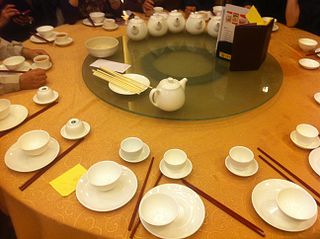Mirrors are common household items. They are used for dressing, for reflecting more light and for creating the feeling of a larger space. But mirrors also have negative aspects.
Mirrors can create false images and incite chaos and conflict. For example, a bedroom with mirrored closets often creates insomnia. Also, have you ever noticed that if you talk with a friend while sitting next to a full mirrored wall, the discussion often turns into an argument?
Mirrors have become feng shui gadgets. Some feng shui schools claim that mirrors can deflect bad energy, draw good energy, and can even create an invisible opening when hidden inside a wall. These are just some of the few examples that some claim are the powers of mirrors. For the past few decades, as feng shui gained popularity in the United States, many have come to see mirrors as the aspirin of feng shui, possessing the ability to take care of all issues.
A mirror is a very ordinary object. However, there is much to be learned from it.
Mirrors have been used as a metaphor in many ancient teachings. The best known example in China is an event in Zen history. When the Fifth Patriarch was about to pass on the transmission, he asked all his disciples to present their understanding. The head teacher, Shen Xiu, wrote: “Our body is a Boddhi [wisdom] tree, our heart is a mirror, dusting it diligently daily, does not allow it to be covered by any dust.”
Hui Nen, a monk, working in kitchen, who did not know how to read and write, asked a fellow monk to write and present his understanding: “The Boddhi has no tree, the mirror has no platform, if there is nothing to begin with, how can dust rest anywhere.” With this understanding, He received the transmission and became the Sixth Patriarch.
A mirror reflects what is in front of it. When that disappears, the reflection also disappears. The lesson here is, when something comes, reflect and respond to it; when it leaves, do not hold on to it. Live in the moment, not in grasping after the past or future.
When people stand in front of a mirror, it reflects them. When a king stands before a mirror, it reflects the king. When a beggar stands before a mirror, it reflects the beggar. There is no discrimination. A king does not receive more, nor does an ordinary person receive less. A reflection is just a reflection. No matter who comes to you, then, you should treat them equally.
When a mirror reflects a color, the mirror does not change. The mirror maintains its original nature. As a person, regardless of how things change, one does not change oneself.
A mirror, an ordinary object, can be a great teacher. Isn’t that also true for all things around us? If we pay attention to ordinary things, situations and events, how much additional insight can we gain?
Shan-tung Hsu
Blue Mountain Institute





 There is a country with a land size of 35,900 Km square, 0.37 % of USA. It has a population of 23 million (7.35% USA). This country has no oil, iron, coal, gold, or mineral deposit, nor does it have any other noticeable natural resources.
There is a country with a land size of 35,900 Km square, 0.37 % of USA. It has a population of 23 million (7.35% USA). This country has no oil, iron, coal, gold, or mineral deposit, nor does it have any other noticeable natural resources.
 A logo is a graphical element, together with its logotype, forms a trade mark or commercial brand for recognition. One of the most important parts of a company’s branding strategy is choosing the right logo. From a feng shui point of view, a logo is beyond just a trademark or brand. It encapsulates the
A logo is a graphical element, together with its logotype, forms a trade mark or commercial brand for recognition. One of the most important parts of a company’s branding strategy is choosing the right logo. From a feng shui point of view, a logo is beyond just a trademark or brand. It encapsulates the
 The purpose of Feng Shui is to create a good living environment for all living beings. The “environment” in Feng Shui concepts exists in all scales; the planet, continent, region, city, neighborhood, house, room, and down to a favorite chair.
The purpose of Feng Shui is to create a good living environment for all living beings. The “environment” in Feng Shui concepts exists in all scales; the planet, continent, region, city, neighborhood, house, room, and down to a favorite chair.